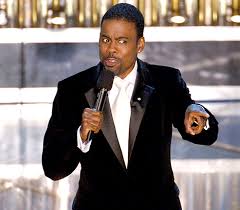
Chris Rock, the host of this year’s Oscars, while making a point about the lack of black actors nominated for awards, pointed out that perhaps it was because there was no category for black actors. Sounds odd that there would need to be such a category, but it was also strange in this day and age, he pointed out, to have acting awards distinguished by gender. Acting is not an area where men and women needed to be evaluated separately in order to be evaluated fairly, the way, for example, some athletic activities are.
But if there was no “best female in a leading role” category we would undoubtedly see the same pattern we see so often, that primarily male producers would hire primarily male directors and make films written by primarily male writers, with primarily male leading roles. So that, without a category for women, the Oscars would be not only mostly white, but also mostly male. At some point, I can only hope that the reality that more women watch movies than men would lead the industry towards more movies relevant to women, more great roles for women, more great scripts by women, and perhaps the need for a separate category for female actors would go away. Until then, let’s keep the category, because I find it depressing to see women consistently overlooked in other categories that are not gender dis-aggregated, like directing. (Hello? Debra Granik not even nominated for Winter’s Bone??!! But I digress.)
The problems in Hollywood around gender are just a symptom of a deeper issue, which is a lack of recognition of the value and influence of women. And this is truer in many developing economies than anywhere else. About 10 years ago, the phrase “women and girls” started to pop up more and more. The Girl Effect, an in initiative and awareness raising campaign led by Nike, helped people begin to see the catalytic impact that investing in women and girls could have on society. Most shocking to many was learning how systematically women and girls were undervalued, and the huge cost that had not just for them, but for whole communities.
I sometimes worry that in a zero sum world of competing causes and funding, there is a risk is that “women and girls” are looked at as an issue, rather than a way to describe 49.6% of the global population. If we simply behave as if half of the people in the world matter, and that economic growth, good governance and basic human rights, are impossible if they are not accessible to half the people living on the planet, then the interesting question becomes not whether we should focus on women and girls, but rather, how do we behave as if women matter.
The Girl Effect, Half the Sky, and Girl Rising are three campaigns of the last decade that have done much to elevate the issues facing women and girls to a global stage, leading to huge strides in making education, healthcare, economic opportunity and human rights accessible to women and girls. And in part because of these efforts, the issue of parity for women in pay, political access and leadership roles is moving to the center of major discussions from the Sustainable Development Goals to our own national election.
What started as a cause is becoming a way of looking at the world with a clearer view of what IS.
Today I celebrate my first International Women’s Day since I helped Acumen publish its report on the role of women in social enterprise with the International Center for Research on Women. I’m now committed to looking at my own work with a gender lens, both at Acumen – which finds and scales business that can improve the lives of poor people, and as a board member at The White Ribbon Alliance, which partners with women leaders across the developing world to advocate for improved maternal health. I don’t yet know where this new perspective will lead, but I do know that a gender lens is not a destination or a set of goals that one can aspire to. It is a way of seeing the world, with eyes wide open to what is actually there. It is being able to see when women are missing from a picture and considering what they could add if they were present. It’s seeing women as consumers, employees, leaders and investors, and behaving accordingly.
To go back to the Hollywood industry metaphor, it’s being able to stand in a packed movie theatre and see the women that are already there, and then, being able to imagine a new story playing out on the screen: one where women are fully represented as part of the complete story, not left in the background or entirely invisible. And it’s a story that is not just created for women, or about women, but also by women. Because whether we are men or women, the story people really want to hear is the one that’s based on a true story. And a story, or a government, or a business model, that excludes women, is one that is truly missing the big picture.

